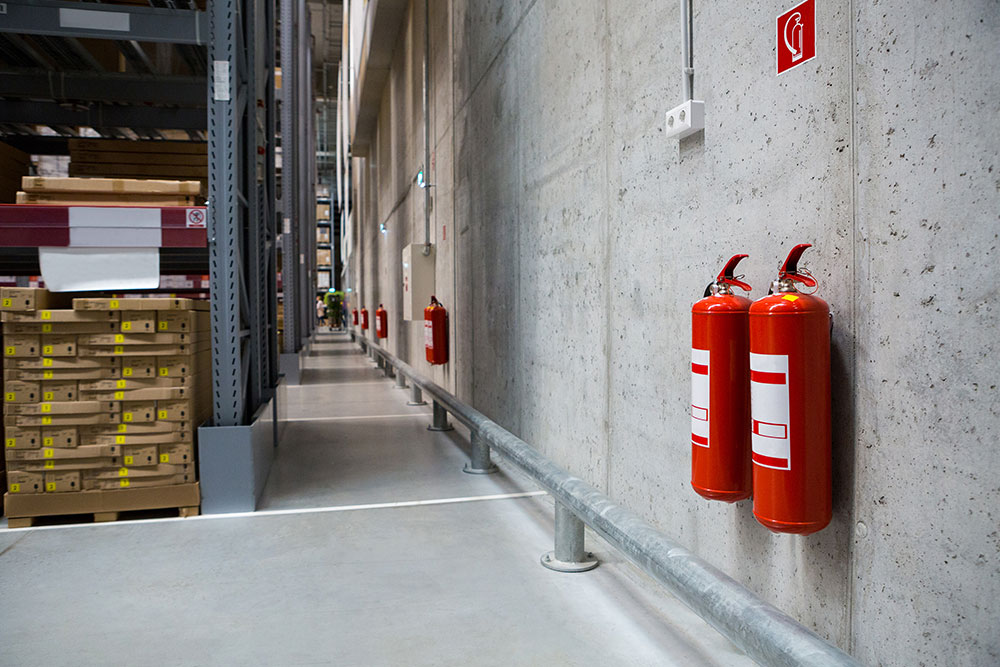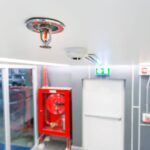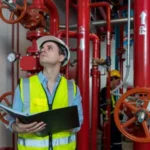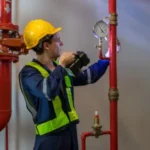Fire protection is a critical component of any commercial building’s safety infrastructure, but the needs can vary significantly based on the type of space, especially when comparing warehousing and retail environments.
While both settings demand code compliance, cost-efficiency, and effective safety measures, the unique risks and structural layouts of each dictate very different fire protection strategies. Below, we explore how these requirements differ, supported by modern fire protection solutions offered by industry-leading providers.
What Are the Core Differences in Fire Risks Between Warehousing and Retail?
Warehousing facilities primarily store large volumes of goods, often in high-piled configurations, posing a distinct set of fire hazards. These can include:
- Flammable packaging materials
- Automated material handling equipment
- Limited human presence (making early fire detection more difficult)
In contrast, retail spaces are designed for customer interaction. They are typically more open, better lit, and host more people during operating hours, increasing the urgency of fast fire response and safe evacuation protocols.
How Is Fire Protection in Warehousing Spaces Optimized?
In warehouse and distribution environments, the fire protection system must address the challenges of:
- High-Piled Storage: Stacked goods can obstruct sprinklers and allow fires to grow vertically.
- Commodity Variety: Different materials (e.g., plastics, cardboard, food) burn at different rates, requiring tailored suppression methods.
- Cold Storage: Food storage in coolers and freezers needs systems that function reliably in low temperatures.
To counter these challenges, advanced fire protection companies use precise warehouse fire sprinkler system design. Usually, these designs include:
- High-piled storage protection technologies to adapt to diverse storage configurations.
- Dry pipe systems in cold environments prevent water from freezing in sprinkler lines.
- Movable in-rack sprinklers are designed specifically for tightly packed or mobile shelving systems.
These innovations ensure that warehouse spaces are safeguarded without sacrificing storage efficiency.
What Fire Safety Solutions Are Ideal for Retail Spaces?
Retail buildings require fire protection that is both effective and unobtrusive. Because these spaces often have high foot traffic and frequent public access, the systems must prioritize:
- Rapid response time
- Minimized equipment visibility
- Reduced installation and maintenance costs
The most suitable systems for retail include:
- Extended coverage and fast-response sprinklers, which protect wider areas and activate more quickly, reducing the number of sprinklers required by up to 50%.
- Flexible system designs that can be integrated with lighting, signage, and HVAC without disrupting aesthetics.
These approaches enhance safety while preserving the visual appeal and functional design of customer-facing spaces.
How Does Fire Protection Differ in Automated vs. Traditional Environments?
Modern warehouses often incorporate automated material handling systems—robotic arms, conveyor belts, and automated storage units. These add layers of complexity to fire protection planning.
Specialists use 3D CAD design software to develop precise, custom-fit fire protection solutions that accommodate automated layouts. This is crucial for:
- Avoiding interference with robotic systems
- Ensuring unobstructed sprinkler discharge
- Maintaining system performance as equipment evolves
Retail spaces, by contrast, are typically less automated but may still include interactive kiosks and digital displays, all of which require appropriate fire safety clearance and integration.
What Role Does Building Age and Retrofit Play in Fire Safety?
Older buildings, especially warehouses, often lack modern fire protection infrastructure. Upgrading these spaces is not just about installing new sprinklers—it requires:
- Partnering with material handling experts to ensure structural and code compliance
- Obtaining high-pile permits for increased storage capacity
- Integrating systems without compromising the building’s integrity
Retail retrofits may focus more on minimizing downtime, preserving interior design, and complying with ADA and fire codes, especially when altering floor plans or adding new merchandise layouts.
How are high-hazard areas being managed in warehouses?
There are some warehouse operations that involve high-hazard or “H occupancy” operations. These include:
- Flammable liquids
- Combustible dust
- Pressurized gas containers
They have fire protection measures in place that are:
- ESFR (Early Suppression, Fast Response) sprinklers
- Ventilation and containment systems
- Explosion-proof electrical fittings
An experienced Fire Code Consultant plays a vital role in evaluating these high-risk environments, selecting the right suppression technologies, and securing the necessary permits.
How Does A Specialized Provider Benefit Warehousing And Retail Safety?
Guardian South Fire Protection is a leading fire protection company in Southern California with decades of experience in a variety of industries. Their approach is:
- Code-compliant and cost-effective to ensure compliance and budget management without compromises
- Flexible and custom, adapting to unique layouts and risks
- Timely and diplomatic, committed to finding ways to solve complicated fire protection problems while showing dignity and integrity
Conclusion
Fire protection and suppression in a warehousing and retail environment likely share the same life-safety objective, yet the systems that deliver the fire protection are completely different in nature.
From the towering racks of inventory. From the towering inventory racks of warehouses to the open, customer-centric layout of retail stores, fire safety must be designed with context in mind. By partnering with an experienced fire protection provider, businesses can ensure their environments are secure, compliant, and prepared for any emergency.
Frequently Asked Questions (FAQs)
Q1: Can one fire protection/suppression system be applied to the warehouse and retail areas in a mixed-use facility?
A. Yes, but the two areas need to be zoned and specified to meet the unique fire load and occupancy type. A professional fire protection designer will be able to maximize compatibility and code compliance.
Q2: Are dry pipe systems required in all warehouse spaces?
A: This is not always the case. Dry pipe systems are always necessary in areas subject to freezing conditions, like cold storage or unheated sections of a warehouse.
Q3: How often should fire systems in a retail store be inspected?
A: The NFPA guidelines recommend quarterly inspections; however, your local codes and occupancy types may dictate more frequent checks.
Q4: Do modern fire systems lead to a discount in insurance premiums?
A: Yes, many insurance companies will provide discounts to businesses that have installed advanced, code-compliant fire protection systems.
Q5: Is the significant fire safety consideration relating to warehousing?
A: High-piled storage and different commodities require carefully designed suppression systems that achieve maximum efficiency and also maximizes storage capacity.







